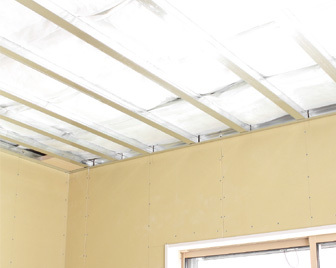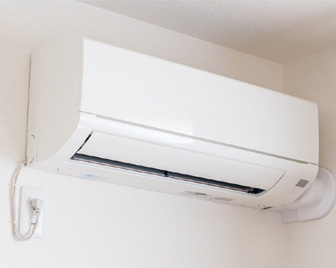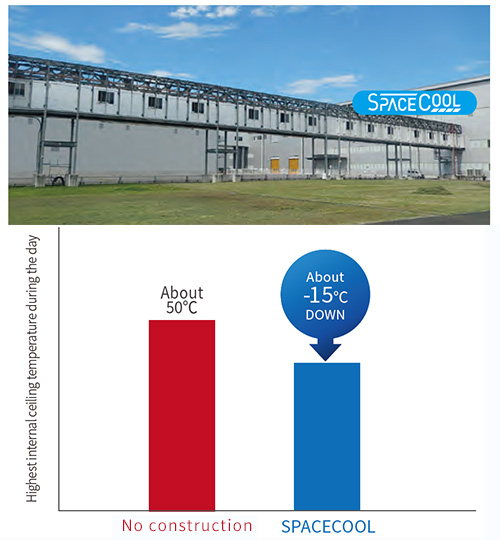Reduces the rise in ambient temperature inside the building,
cooling costs and CO2 emissions
Warehouses, factories, etc.
Reduces the rise in ambient temperature inside the building,
cooling costs and CO2 emissions

Provides the coolness of a tree shade for greater comfort and prevents heat stroke

Reduces the rise of indoor temperatures and improves the condition of stored items

Reduces cooling load, cost, and CO2 emissions

【Insulating material】
・ A thick insulating material is needed, which reduces loading efficiency and increases weight
・ Temperature rises at night due to the stored heat

【Air-conditioning】
・High power consumption and CO2 emissions in the course of cooling
SPACECOOL was installed on the exterior walls and roof of the passageway between buildings, and the internal ceiling temperature was found to drop by around 15℃.

<Test Contents>
Object: Exterior walls and roof of the passageway between buildings at Honda Yorii Factory
Demonstration site: Passageway between buildings at Honda Yorii Factory
The internal ceiling temperatures of the areas with and without SPACECOOL installed were measured.
<Test Results>
With SPACECOOL:When air conditioning was turned off, the internal ceiling temperature was found to drop by around 15℃ at the time of the day with the highest temperature.
This demonstration test was conducted as a joint development project with Honda Motor Co., Ltd.
SPACECOOL accompanies people in society for various applications, aim to improve comfort and safety, and mitigates global warming.